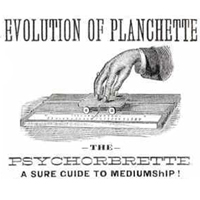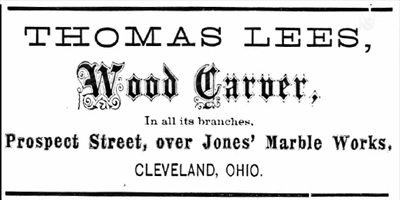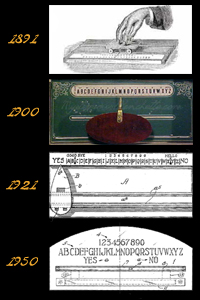Thomas Lees seems to have led a varied and fruitful life, and because of him we know of the existence of a rare American slide-board style dial plate know as the "Psychorbrette." Thomas Lees was an English immigrant, born in 1834, who crossed the Atlantic with his wife in 1855 to pursue the American dream. The couple settled in Cleveland, Ohio, and Lees, a woodcarver by trade, began offering his services to the citizens of the city. Researching the city directories, Lees looks to have been a multifaceted merchant. Lees seems to have always maintained a wood-carving concern out of his 105 Cross Street home, but also acted as an agent for sewing machines for a few years, manager for the Case Swinging Treadle Company in others, and was proprietor of "Lees' Bazaar" in 1878, which leads us to believe that his later concern at 144 Ontario Street (or 142 as listed on the Psychorbrette Ad), was a mercantile of some sort, not the least because his listed locations had just a few years previously been showrooms of one of Ohio's largest mercantiles owned by another Englishman, Benjamin Rose. However, given many listings and identities for the large building at that address for the period, and its listed use as a meeting hall by the American Order of Steam Engineers, it seems equally likely that the large building hosted multiple offices or rented showrooms in an early sort of mall.
Whatever the nature of the address, we know that Thomas Lees was a man of enterprise, so it comes as little surprise to find him engaged in the trade of spirit communication devices, especially in Ohio, as it was traditionally a hotbed of Spiritualism as well as the prenatal womb of the ouija board. No surviving examples of the Psychorbrette are currently known to exist, but it is clear from advertisements of the time that it was of the slide-board type, consisting of a long, rectangular board probably about 15-inches long and marked with an alphabet along its upper length. The planchette was a small, 4-wheeled rectangle with a small brass pointer, which likely moved along a fixed rail at the board's bottom, making it a captured planchette type.
The Psychorbrette-sometimes seen with the alternative "psychobrette" or "psycho-brette" spellings, received a fair amount of mention in the Spiritualist newspapers of its day, though always in passing mention of it as a tool of spirit communication, and with a casual reference that leads us to believe their existence was common enough to not elicit further explanation as to what the device was. Such references, along with its advertisements, appear in 1891, so it is highly likely the device predates the introduction of Kennard's Ouija board just slightly. It also anticipates Braham's (and later Two Worlds') Spirit Communicator devices by a decade, and Bigelow's 1931 patent by 40 years. How much inspiration these items gained from the Psychorbrette is unknown, but it is hard to believe they did not rely on the earlier success of Lees' boards. Whether Lees used his own wood-working skills to manufacture the boards or, more likely, that he simply served as the retail clearinghouse for the devices, is unknown as well, but it is safe to assume that he acted as the selling agent for an unknown manufacturer, as the ads state.









